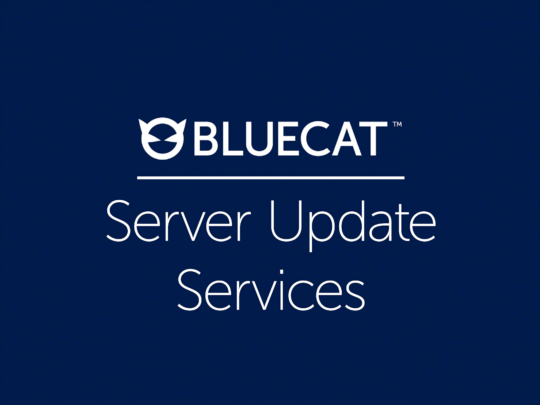BlueCat Server Update Services
BlueCat Server Update Services provides flexible update and patch management for server farms to ensure resilient and secure infrastructure.

Easy navigation
Easily navigate server metadata and server batch assignments all from one web-based console.
Complete confidence
Get notified and identify the status of updates and patches, ensuring critical apps and services are running.
Zero-touch updates
Schedule batch updates using the native UI or APIs to automate server updates.
Maintain service
Flexible server staging options allow users to run updates programmatically and ensure the business is always moving.
Features
- Server batching: Migrate existing server groups from BlueCat Address Manager to create respective batches or create a new batch from managed BlueCat DNS/DHCP servers.
- Applying updates: Combine updates and patches into a single event and apply it to one or more server batches.
- Event list: View all updates in progress to completion with details such as the time of the event, server batches included, and the user that started the event.
- Scheduling: Specify updates or patches to be applied to one or more servers and pre-stage when they should take place.
- Automated provisioning: Leverage RESTful APIs to automate patching, upgrades, and inventory reporting for servers.
- Advanced configurations: Across a group of servers, manage complex configurations like custom syslog redirection or Anycast settings from one central UI.
